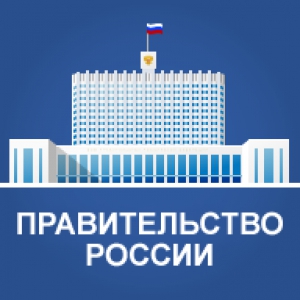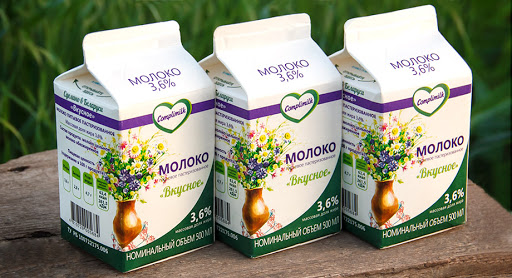Tectonic shift: how Russia's foreign trade has changed in 2022 Russia no longer discloses data on foreign trade, but there is enough information from trading partners to draw conclusions about the transformation in this area. China became the number one p
Sanctions by so-called unfriendly states against RUSSIA, counter-sanctions by Moscow and the voluntary suspension or reduction of trade by Western companies with Russia have led to a fundamental restructuring of domestic foreign trade in 2022, and this process is ongoing. Russia started the year with about 55% of exports and imports of goods and services tied to unfriendly countries. it is difficult to estimate the current share, but in the turnover it could decrease to approximately 45%. The lion's share of this was the supply of oil and petroleum products to Europe before the European embargo came into force in December. Data for the last month of the year is not yet available.
Switch trade to friendly countries
In the spring, the Russian authorities stopped disclosing the commodity structure and geography of foreign trade. But the first deputy HEAD of the Federal Customs Service, Ruslan Davydov, reported in October that exports from Russia for the nine months of 2022 amounted to $431 billion (plus 25% compared to last year), and imports - $180 billion (minus 16%). It follows from these data that the trade turnover in January-September amounted to $611 billion.
The data of Russia's main trading partners from among neutral or friendly countries (CHINA, Turkey, India, Kazakhstan) and the data on trade turnover with Belarus announced by the Ministry of Economic Development for nine months indicate that the total turnover with these five countries alone reached $261 billion, or almost 43% of general. In the same period of 2021, they accounted for 32.4% of Russian trade turnover, that is, the share of these countries could increase by more than 10 percentage points. It should be taken into account that these are approximate estimates, since the data for the calculation are collected from different sources and cannot be reduced to a common denominator.
The share of the remaining several dozen states - from Egypt to Ecuador - that did not join the anti-Russian sanctions, in 2021 exceeded 11% of Russia's total trade turnover, follows from the data collected by RBC. Even assuming that it remains the same in 2022, the share of neutral/friendly economies will already increase to about 55%. RBC sent a request to the Ministry of Economic Development.
By continuing to buy raw materials from Russia, the West is giving Russia "purchasing power and the ability to import," Robin Brooks, chief economist at the Washington Institute for International Finance (IIF), is skeptical. “All we have done so far is just redistribute global trade,” he says.
Record surpluses in 2022
Read on RBC Pro Moving to Montenegro: is it difficult for Russians to settle down in this country DJ at night, banker during the day: how the CEO of Goldman Sachs rests Chinese empire: how the mysterious owners of Shein earned $ 40 billion Risk group:Which employees are the easiest to change jobs?In the second quarter of 2022, Russia registered a record balance of payments surplus in its history — $76.7 billion, which was formed mainly due to a positive balance of foreign trade in goods and services — more than $90 billion. The phenomenon of such a huge net inflow of money from international trade against the backdrop of sanctions has already was described and explained, on the one hand, by an increase in the value of Russian energy exports (as well as by the continuation of non-sanctioned supplies of non-ferrous metals, agricultural products and fertilizers), and, on the other hand, by a contraction in imports due to the sanctions shock. Against this background (and in the context of the cessation of foreign currency purchases under the budget rule), the ruble strengthened at a record high rate in the spring, and in June fell below 53 per DOLLAR for the first time in seven years.
“In terms of the value of foreign trade turnover, we have already overtaken last year. Mainly due to EXPORT volumes, we are likely to have a record trade surplus. Even December will not change the overall picture for energy carriers,” Davydov told RIA Novosti on December 30. In 2021, Russia's trade turnover amounted to about $787 billion (exports - $493 billion, imports - $293.5 billion).
However, in the second half of the year, despite the fact that historically high surpluses still persist, the situation began to change not in favor of Russia. Already in the third quarter, the trade balance shrank by about a quarter compared to the second quarter, to $68 billion. In October-November, the balance of goods and services continued to decline, according to the Central Bank's estimates. “A sharp decline in imports of goods in the second quarter of 2022 was replaced by a gradual recovery in the subsequent months of this year,” the regulator noted in December. Imports partially recovered due to the creation of new logistics routes and the development of parallel import mechanisms, the HSE Department of World Economy indicates in the December monitoring (available to RBC).
At the same time, the approaching European embargo on imports of crude oil from Russia (and until 2022, more than 55% of Russian oil supplies went to the EU countries), the setting of a price ceiling for Russian oil by the G7 (G7) countries and the decline in oil prices caused a reduction export earnings of Russian oilmen.
Risks for oil exports
According to Argus Media, in January, before the start of the special operation in Ukraine, shipments to the EU accounted for 85% of the total volume of sea shipments of the reference Russian grade Urals, and in September - only 24%. At the same time, India increased purchases of Urals from zero at the beginning of the year to slightly more than 40% by the beginning of autumn, and Turkey - from less than 5 to 21%. Particularly impressive is the growth in Russian oil exports to India compared to 2021. In January-October, this country imported 24.8 million tons of raw materials - more than eight times more than in the same period a year earlier (3 million tons), and in monetary terms - by $ 17.2 billion, nine times more, than a year earlier ($1.9 billion), follows from the data of the Indian Ministry of Commerce.
Russian oil deliveries to China increased much more modestly, but China is a much larger consumer of Russian raw materials. According to the Chinese customs, in January-November 2022, the country imported 79.8 million tons of Russian oil (10% more than in the same period of the previous year) with a total value of $54.5 billion. In November, Russia again came out on top in terms of supplies of crude oil to China, bypassing Saudi Arabia (which in August-October was ahead of Russia). India and China buy not only Urals, but also ESPO blend, which is transported to the markets of the Asia-Pacific region via the Eastern Siberia-Pacific Ocean (ESPO) pipeline system.
Since November, a decrease in offshore deliveries of Russian oil in physical terms began, which, according to preliminary data, continued in December, the HSE Department of World Economy notes. BLOOMBERG reported a more than halving of Russian oil shipments by sea in the week ending December 16 compared to the previous week (from 3.5 million to 1.6 million barrels per day). “The decline in Russian oil exports seems to be due to the reluctance of a number of shipowners to provide their tankers for transporting Russian oil,” Tatiana Orlova, a leading emerging markets economist at Oxford Economics, writes in a December 22 review (available to RBC). She points out that a number of countries that have not joined the G7 price ceiling ($60 per barrel, excluding the cost of freight to the destination market and insurance) purchase Russian oil cheaper than this level and, thus, use the opportunity to receive the services of European companies (oil transportation, insurance, etc.). The discounts with which India and China buy Russian oil at the end of November reached 40% against the Brent benchmark.
Russia is ready to reduce oil production by 500-700 thousand barrels. per day (5-7%) in early 2023 due to the price ceiling imposed by the G7, Deputy Prime Minister Alexander Novak warned on December 23.
The dollar rose against the ruble by almost 10 rubles. per month, up to 72 rubles, at the close of trading on December 29. This is one of the early indicators that Russian oil exports have fallen significantly in recent weeks, said Elina Rybakova, deputy chief economist at the IIF.
Growing dependence on China
In 2023, the foreign trade balance will be at least halved from about $270 billion in 2022, Mikhail Zadornov, chairman of the board of FC Otkritie, estimated in an interview with RBC in December. The long-term prospects for Russian exports will largely depend on demand from China and India, the effectiveness of the sanctions policy of Western countries in the field of enforcement - forcing other market players and countries to join the oil price ceiling, the HSE thinks. Among the risks of 2023 is a high probability of a slowdown in China, Europe and the United States , “which in itself will lead to a contraction in demand for energy and raw materials,” warns Dmitry Belousov, an economist at TsMAKP.
Zadornov emphasizes that what the country “earned” in 2022 on foreign trade cannot be fully attached somewhere - Russian companies and the state cannot keep them in dollars and euros, and partner countries can export goods for this amount to Russia can not. “We do not have goods that can be imported from China and especially from India on a comparable scale with Russian exports of oil, gas, oil products to these countries,” the banker said.
Indeed, while India purchased $28 billion worth of goods from Russia in the ten months of 2022, it managed to export goods to Russia for only $2.3 billion, which is 14% less than in the same period last year. In the context of a reduction in the supply of Western equipment and technologies, China has become the main pillar of Russia, increasing exports to Russia by 13% in annual terms in January-November 2022, to $67 billion. For example, exports of goods from the United States to Russia fell by five times by October - up to $80 million, while in January it reached about $400 million.
If before the military operation in Ukraine, China provided about a quarter of Russian merchandise imports, now this share should be “much higher than one third, perhaps 40%,” Iikka Korhonen, head of the Bank of Finland’s Institute for Transition Economies, said in November. “In terms of imports, Russia is now, if not the most dependent country on China, then the second after North Korea,” the economist noted. Moreover, the dependence of the Russian economy on China will only grow over time, Korhonen believes.
In 2022, China, in particular, increased deliveries to Russia of trucks, excavators and loaders, rubber tires, pumps and compressors (including turbochargers for car engines), taps, gate valves, valves and gates. By 16% over 11 months of the year (compared to the same period of the previous year), China increased exports to Russia of group 84 goods (boilers, equipment, mechanical devices: internal combustion engines, heating equipment, hoists, metal-cutting machines, etc.) - up to $14.9 billion
However, China cannot fully make up for the lack of supplies of Western components and equipment in Russia. Shipments to Russia of Chinese goods that are on EU or U.S. restrictive lists are growing at a slower pace than those exempt from sanctions, Korhonen said in November, indicating that either China is not producing adequate equivalents to high-tech products (such as advanced microchips), or is not ready to supply them to Russia due to sanctions risks or national security considerations. The Chinese government banned the supply of Loongson processors based on its own architecture to Russia, Kommersant reported in December. In addition, a number of manufacturers from unfriendly countries assembled computers in China and stopped exporting them to Russia (for example, Taiwanese Acer and Asus).
Even Chinese exports of consumer electronics to Russia in 2022 are below last year's figures (in dollar terms). Deliveries of communication devices, including smartphones, in January-November decreased by 20% in annual terms, to $ 3.7 billion. Shipments of laptops and tablets over the same period decreased by 25%, to $ 1.4 billion. Negative effects of reduced supplies of Western equipment and technologies that cannot be replaced by alternative supplies or domestic production will appear in the medium and long term, the HSE Department of World Economy points out.
The growing role of Turkey
The second country after China, which has sharply strengthened economic cooperation with Russia, was Turkey. In January-October, its merchandise exports to Russia grew one and a half times compared to the same period a year earlier, to $6.9 billion, according to the Turkish Institute of Statistics. In October, Turkey overtook Germany in terms of exports to Russia in dollar terms ($1.15 billion versus just under $1 billion) and moved into third place in the list of largest suppliers to Russia, after China and Belarus.
A significant amount of goods coming from Turkey to Russia is re-export, the French newspaper Le Monde wrote at the end of October. “Cargo from various countries is unloaded at the ports of Mersin, Istanbul and Izmir, then placed in containers owned by local companies or subcontractors and sent by sea to Novorossiysk or trucked to Russia through Georgia,” the publication claimed, calling it “a hole in the wall sanctions."
Having grasped the special significance of Turkey as a transit hub, Russian logistics operators have launched services for the delivery of goods from this country. In November, the logistics operator Delovye Linii announced the launch of the delivery of goods from Turkey for individuals. The company noted that the introduction of the service is associated with a significant increase in the number of customers in Russia who purchase goods in Turkey, both local and European-made for their own needs. “Now a lot of European goods enter Russia through Turkey due to its geographical location, so this direction is especially in demand,” the press service of Delovye Linii reported in November.
Another Russian logistics operator, PEK, announced in December that it had launched regular groupage flights from Turkey to Russia. They are delivered by sea to Novorossiysk, and then by road - throughout Russia. The PEK said it expects to increase its cargo turnover between the two countries tenfold by the end of 2023.
In mid-December, REUTERS published a "special report" that some Turkish firms registered in 2022 were shipping computer parts from the US to Russia. Computer and other electronic components worth at least $2.6 billion were shipped to Russia through Turkey, Hong Kong and other similar hubs in April-October. Of these, at least $777 million are products manufactured by Western firms such as Intel, AMD, Texas Instruments, Analog Devices, Infineon, Reuters reported. In turn, The Financial Times wrote in mid-December about the growing business of Russian “import specialists” who are looking for loopholes and using connections and small bribes to smuggle goods into Russia through countries such as Turkey, Armenia, Kazakhstan, more not shipped from Europe.



























































